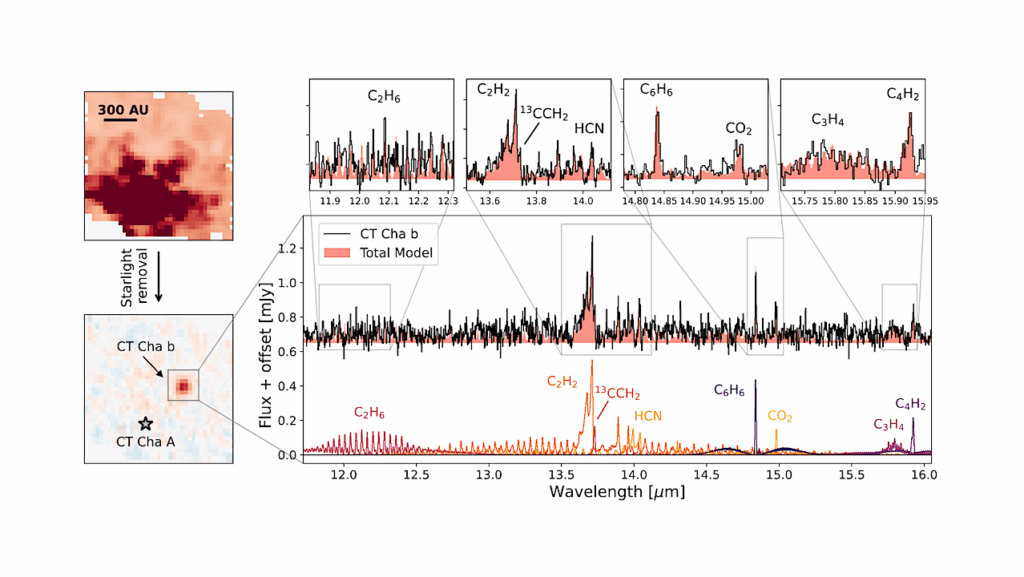A Hot Super-Neptune With an Earth-sized Low-mass Companion

We report on the characterization of the Kepler-101 planetary system, thanks to a combined DE-MCMC analysis of Kepler data and forty radial velocities obtained with the HARPS-N spectrograph. This system was previously validated by Rowe et al. (2014) and is composed of a hot super-Neptune, Kepler-101b, and an Earth-sized planet, Kepler-101c.
These two planets orbit the slightly evolved and metal-rich G-type star in 3.49 and 6.03 days, respectively. With mass M p = 51.1 +5.1 −4.7M⊕ , radius R p = 5.77 +0.85 −0.79R⊕ , and density ρ p = 1.45 +0.83 −0.48 gc m −3 , Kepler-101b is the first fully-characterized super-Neptune, and its density suggests that heavy elements make up a significant fraction of its interior; more than 60% of its total mass. Kepler-101c has a radius of 1.25 +0.19 −0.17R⊕ , which implies the absence of any H/He envelope, but its mass could not be determined due to the relative faintness of the parent star for highly precise radial-velocity measurements ( K p =13.8 ) and the limited number of radial velocities. The 1 σ upper limit, M p <3.8 M⊕ , excludes a pure iron composition with a 68.3% probability. The architecture of the Kepler-101 planetary system - containing a close-in giant planet and an outer Earth-sized planet with a period ratio slightly larger than the 3:2 resonance - is certainly of interest for planet formation and evolution scenarios. This system does not follow the trend, seen by Ciardi et al. (2013), that in the majority of Kepler systems of planet pairs with at least one Neptune-size or larger planet, the larger planet has the longer period. Characterization of the Kepler-101 planetary system with HARPS-N. A hot super-Neptune with an Earth-sized low-mass companion
A. S. Bonomo, A. Sozzetti, C. Lovis, L. Malavolta, K. Rice, L. A. Buchhave, D. Sasselov, A. C. Cameron, D. W. Latham, E. Molinari, F. Pepe, S. Udry, L. Affer, D. Charbonneau, R. Cosentino, C. D. Dressing, X. Dumusque, P. Figueira, A. F. M. Fiorenzano, S. Gettel, A. Harutyunyan, R. D. Haywood, K. Horne, M. Lopez-Morales, M. Mayor, G. Micela, F. Motalebi, V. Nascimbeni, D. F. Phillips, G. Piotto, D. Pollacco, D. Queloz, D. Ségransan, A. Szentgyorgyi, C. Watson
Comments: 7 pages, 3 figures, accepted in A&A
Subjects: Earth and Planetary Astrophysics (astro-ph.EP)
Cite as: arXiv:1409.4592 [astro-ph.EP] (or arXiv:1409.4592v1 [astro-ph.EP] for this version)
Submission history From: Aldo Stefano Bonomo Mr. [v1] Tue, 16 Sep 2014 11:41:00 GMT (648kb)







